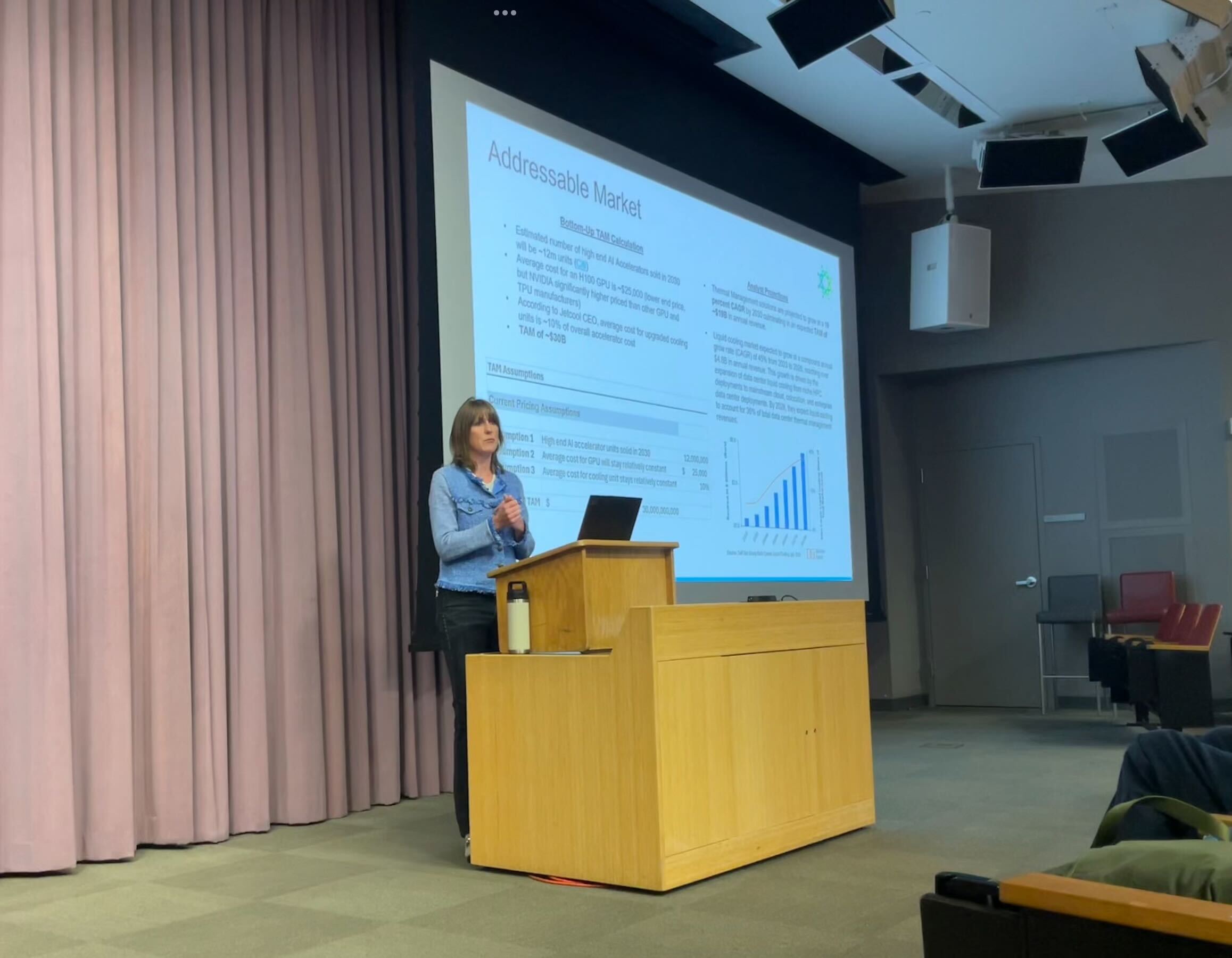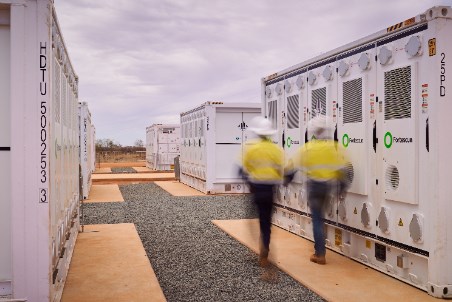Chinese manufacturers surge ahead in Australia’s battery storage market – ess-news.com

Report on the Expansion of Chinese Battery Energy Storage Systems in Australia and Contribution to Sustainable Development Goals
Executive Summary
A significant shift is underway in Australia’s battery energy storage system (BESS) market, with Chinese manufacturers securing substantial supply agreements and rapidly increasing their market presence. Recent deals, particularly those announced following the All Energy industry event, total nearly 10 GWh, indicating a broader trend of Chinese firms supplying critical energy infrastructure. This development is a crucial enabler for Australia’s progress towards achieving key United Nations Sustainable Development Goals (SDGs), most notably:
- SDG 7: Affordable and Clean Energy – By providing the storage capacity needed to integrate intermittent renewables into the grid.
- SDG 9: Industry, Innovation, and Infrastructure – Through the deployment of advanced, resilient energy infrastructure.
- SDG 11: Sustainable Cities and Communities – By supporting decentralized energy solutions for residential and commercial use.
- SDG 13: Climate Action – By facilitating the decarbonization of the energy sector.
Analysis of Key Supply Agreements and SDG Alignment
Trina Storage and Pacific Green Energy Group
Trina Storage has formalized a significant memorandum of understanding (MoU) with Pacific Green Energy Group, reinforcing its commitment to Australia’s clean energy transition. This partnership directly supports large-scale renewable energy integration, a cornerstone of SDG 7 and SDG 13.
- Agreement Scope: Delivery of up to 5 GWh of grid-scale BESS.
- Timeline: Deliveries are scheduled between 2026 and 2028.
- Existing Collaboration: The agreement builds upon the 250 MW / 500 MWh BESS for the Limestone Coast North Energy Park Project in South Australia.
This large-scale deployment enhances grid stability, allowing for a higher penetration of renewable energy sources and contributing directly to climate action goals by reducing reliance on fossil fuels.
EVE Energy and EVO Power
EVE Energy’s strategic partnership with Australian company EVO Power focuses on deploying large-scale, front-of-meter storage solutions, underpinning the development of modern and resilient energy infrastructure as outlined in SDG 9.
- Agreement Scope: Supply of 2.2 GWh of large-scale energy storage products over five years.
- Technology Deployed: The agreement includes EVE’s innovative Mr.Big (628 Ah cell) and Mr.Giant (5 MWh container) systems.
- Market Commitment: EVE has established an Australian subsidiary and secured local standards certifications (AS 3000, AS 3008, AS 5139) to ensure compliance and provide comprehensive local support.
By introducing mass-produced, high-capacity storage solutions and establishing a local presence, EVE Energy is fostering innovation and building the robust infrastructure necessary for a sustainable energy future.
Sungrow’s Distribution Agreements
Inverter and energy storage specialist Sungrow has signed multiple deals with Australian energy distributors, ensuring that BESS technology reaches all segments of the market, from individual households to large-scale utility projects. This multi-level approach is vital for creating sustainable cities and communities (SDG 11).
- Raystech Group: A 1 GWh BESS supply agreement for 2026, segmented into:
- 600 MWh for residential projects
- 150 MWh for commercial and industrial (C&I) projects
- 250 MWh for utility-scale projects
- Supply Partners: A renewed strategic distribution agreement for 300 MWh of BESS and 300 MW of PV inverters for 2026.
- Tradezone: A strategic partnership to deliver clean energy solutions, with specific volumes undisclosed.
These agreements facilitate widespread access to clean energy technology, empowering communities and businesses to participate in the energy transition.
Fox ESS and Solar Juice
The partnership between Fox ESS and distributor Solar Juice targets the rapidly growing residential energy storage market, promoting energy independence and smart energy management at the community level, in line with SDG 7 and SDG 11.
- Agreement Scope: Collaboration on 1 GWh of battery storage projects across Australia.
- Primary Focus: Residential energy storage systems, including inverters (KH, H3 Smart, H3 PRO series) and high-voltage batteries (EQ, CQ, AIO series).
- Future Opportunities: The partnership will explore commercial storage, electric vehicle (EV) charging, and virtual power plant (VPP) integrations.
This focus on residential and smart energy solutions helps build sustainable, resilient communities by decentralizing energy generation and storage.
Market Overview and Cumulative Impact on Sustainability
Broader Market Trends
The individual agreements detailed above are indicative of a larger market transformation. According to data from the CESA Energy Storage Application Branch Industry Database, Chinese companies secured orders for nearly 50 GWh of energy storage in Australia between January and October 2025. This demonstrates a systemic and large-scale contribution to the nation’s energy infrastructure.
Conclusion on SDG Contributions
The cumulative impact of these supply agreements represents a substantial acceleration of Australia’s progress towards its sustainability commitments. The influx of advanced BESS technology is fundamental to achieving SDG 7 (Affordable and Clean Energy) by making renewables a reliable power source. It directly advances SDG 9 (Industry, Innovation, and Infrastructure) by modernizing the national grid and supports the development of SDG 11 (Sustainable Cities and Communities) through decentralized energy solutions. Ultimately, this entire effort is a critical component of a national strategy for SDG 13 (Climate Action), enabling a decisive shift away from carbon-intensive energy production.
1. Which SDGs are addressed or connected to the issues highlighted in the article?
-
SDG 7: Affordable and Clean Energy
The article’s central theme is the large-scale deployment of battery energy storage systems (BESS) in Australia. BESS are critical for stabilizing the electricity grid and enabling the integration of intermittent renewable energy sources like solar and wind. This directly supports the goal of ensuring access to affordable, reliable, sustainable, and modern energy. The deals mentioned, such as Trina Storage’s 5 GWh agreement and Sungrow’s supply of BESS for residential, commercial, and utility-scale projects, are all aimed at strengthening Australia’s clean energy infrastructure.
-
SDG 9: Industry, Innovation, and Infrastructure
The article highlights significant investments in upgrading Australia’s energy infrastructure. The deployment of nearly 10 GWh of BESS represents a major effort to build resilient and sustainable infrastructure. Furthermore, it showcases innovation in the energy sector, such as EVE Energy’s mass production of a 628 Ah cell (“Mr.Big”) and its simplified 5 MWh container solution (“Mr.Giant”). The establishment of an Australian subsidiary by EVE Energy to provide end-to-end services also contributes to industrial development.
-
SDG 13: Climate Action
By facilitating the storage and use of renewable energy, BESS play a crucial role in the transition away from fossil fuels, thereby helping to combat climate change and its impacts. The massive scale of the energy storage projects described in the article (e.g., “nearly 50 GWh of energy storage orders” secured by Chinese companies) indicates a substantial effort to reduce greenhouse gas emissions from Australia’s power sector.
-
SDG 17: Partnerships for the Goals
The entire article is a testament to the power of international partnerships for achieving sustainable development. It details numerous collaborations between Chinese manufacturers (Trina Storage, EVE Energy, Sungrow, Fox ESS) and Australian and international companies (Pacific Green, EVO Power, Raystech Group, Solar Juice). These strategic partnerships and supply agreements are essential for mobilizing the technology and investment needed to advance clean energy goals.
2. What specific targets under those SDGs can be identified based on the article’s content?
-
Target 7.2: Increase substantially the share of renewable energy in the global energy mix.
The article directly relates to this target. BESS are an enabling technology that allows for a higher penetration of renewables by storing excess energy generated during sunny or windy periods for use when generation is low. The deployment of grid-scale projects like the 250 MW / 500 MWh BESS at Limestone Coast North Energy Park is specifically designed to support and stabilize a grid with a high share of renewables.
-
Target 7.a: Enhance international cooperation to facilitate access to clean energy research and technology… and promote investment in energy infrastructure and clean energy technology.
The article is a clear example of this target in action. It describes international cooperation between Chinese technology suppliers and Australian energy companies to deploy advanced BESS technology. The significant financial commitments, such as the “$460 million” enterprise value of the Limestone Coast project, demonstrate the promotion of investment in clean energy infrastructure.
-
Target 9.4: Upgrade infrastructure and retrofit industries to make them sustainable.
The large-scale installation of BESS across Australia, from utility-scale to residential systems, represents a fundamental upgrade of the country’s energy infrastructure. This upgrade makes the grid more flexible, resilient, and capable of integrating clean energy sources, thus making it more sustainable in line with this target.
-
Target 17.17: Encourage and promote effective public, public-private and civil society partnerships.
The article details multiple private-private partnerships aimed at achieving clean energy goals. Examples include the memorandum of understanding (MoU) between Trina Storage and Pacific Green, the strategic partnership between EVE Energy and EVO Power, and the distribution agreements between Sungrow and companies like Raystech Group and Supply Partners. These collaborations exemplify the partnership model promoted by this target.
3. Are there any indicators mentioned or implied in the article that can be used to measure progress towards the identified targets?
-
Capacity of installed battery energy storage (in MWh or GWh).
This is the most prominent indicator throughout the article. It directly measures the scale of investment in clean energy infrastructure and the potential to increase the share of renewable energy (Target 7.2). The article provides numerous specific figures: Trina’s 5 GWh deal, EVE’s 2.2 GWh partnership, Sungrow’s 1 GWh supply, Fox ESS’s 1 GWh collaboration, and the total of “nearly 50 GWh of energy storage orders.”
-
Financial investment in clean energy projects (in dollars).
This indicator measures progress towards Target 7.a and 17.17. The article provides a concrete example with the mention of the Limestone Coast North Energy Park Project having an “enterprise value of $460 million.” This quantifies the financial commitment to a specific clean energy infrastructure project.
-
Number of international partnerships and agreements.
This qualitative but important indicator relates to Target 17.17. The article implicitly tracks this by listing the various MoUs, strategic partnerships, and distribution agreements signed between Chinese and Australian entities. The sheer number of deals announced following the “All Energy” event suggests a strong trend in partnership formation.
-
Capacity of renewable energy generation technology deployed alongside storage (in MW).
While the focus is on storage, the article also mentions an “800 MW solar inverter deal” by Sungrow. This directly measures the deployment of renewable energy generation capacity, which is a key component of achieving Target 7.2.
4. Table of SDGs, Targets, and Indicators
| SDGs | Targets | Indicators Identified in the Article |
|---|---|---|
| SDG 7: Affordable and Clean Energy | 7.2: Increase substantially the share of renewable energy. 7.a: Enhance international cooperation and investment in clean energy. |
– Total capacity of battery energy storage deployed (e.g., “nearly 10 GWh,” “5 GWh,” “2.2 GWh”). – Capacity of solar inverters deployed (e.g., “800 MW solar inverter deal”). – Financial investment value (e.g., “$460 million” enterprise value). |
| SDG 9: Industry, Innovation, and Infrastructure | 9.4: Upgrade infrastructure to make it sustainable. | – Scale of infrastructure projects (e.g., “250 MW / 500 MWh BESS”). – Development of new technology (e.g., “628 Ah” cell, “Mr.Giant” 5 MWh DC container). |
| SDG 13: Climate Action | 13.2: Integrate climate change measures into national policies, strategies and planning. | – The large-scale deployment of BESS (“nearly 50 GWh of energy storage orders”) implies a national strategy for decarbonization. |
| SDG 17: Partnerships for the Goals | 17.17: Encourage and promote effective public-private and civil society partnerships. | – Number of strategic partnerships and MoUs mentioned (Trina-Pacific Green, EVE-EVO Power, Sungrow-Raystech, etc.). – Financial commitments to partnerships (e.g., “$460 million” project value). |
Source: ess-news.com
What is Your Reaction?
 Like
0
Like
0
 Dislike
0
Dislike
0
 Love
0
Love
0
 Funny
0
Funny
0
 Angry
0
Angry
0
 Sad
0
Sad
0
 Wow
0
Wow
0




















































.jpg.webp?itok=0ZsAnae9#)



























